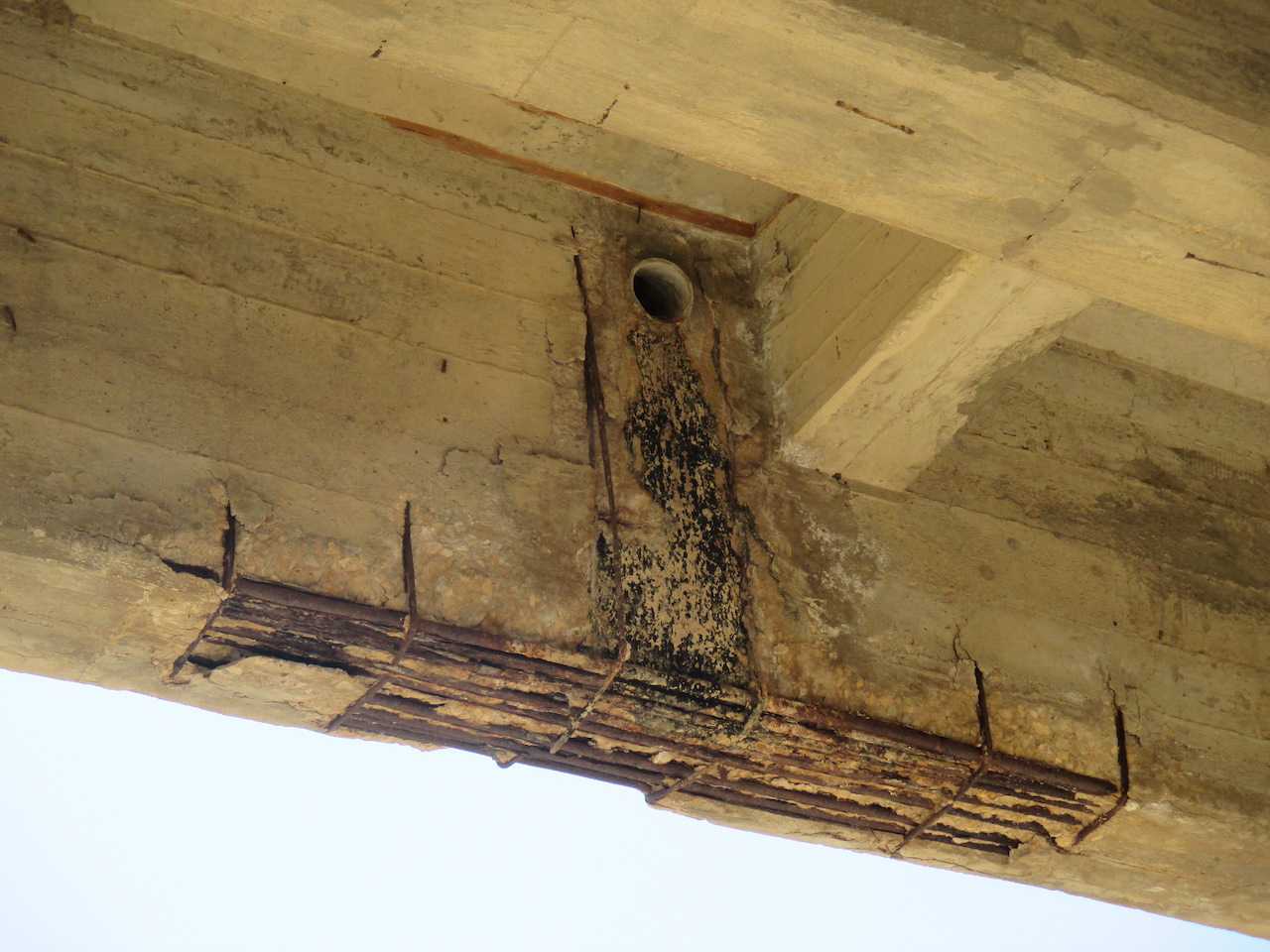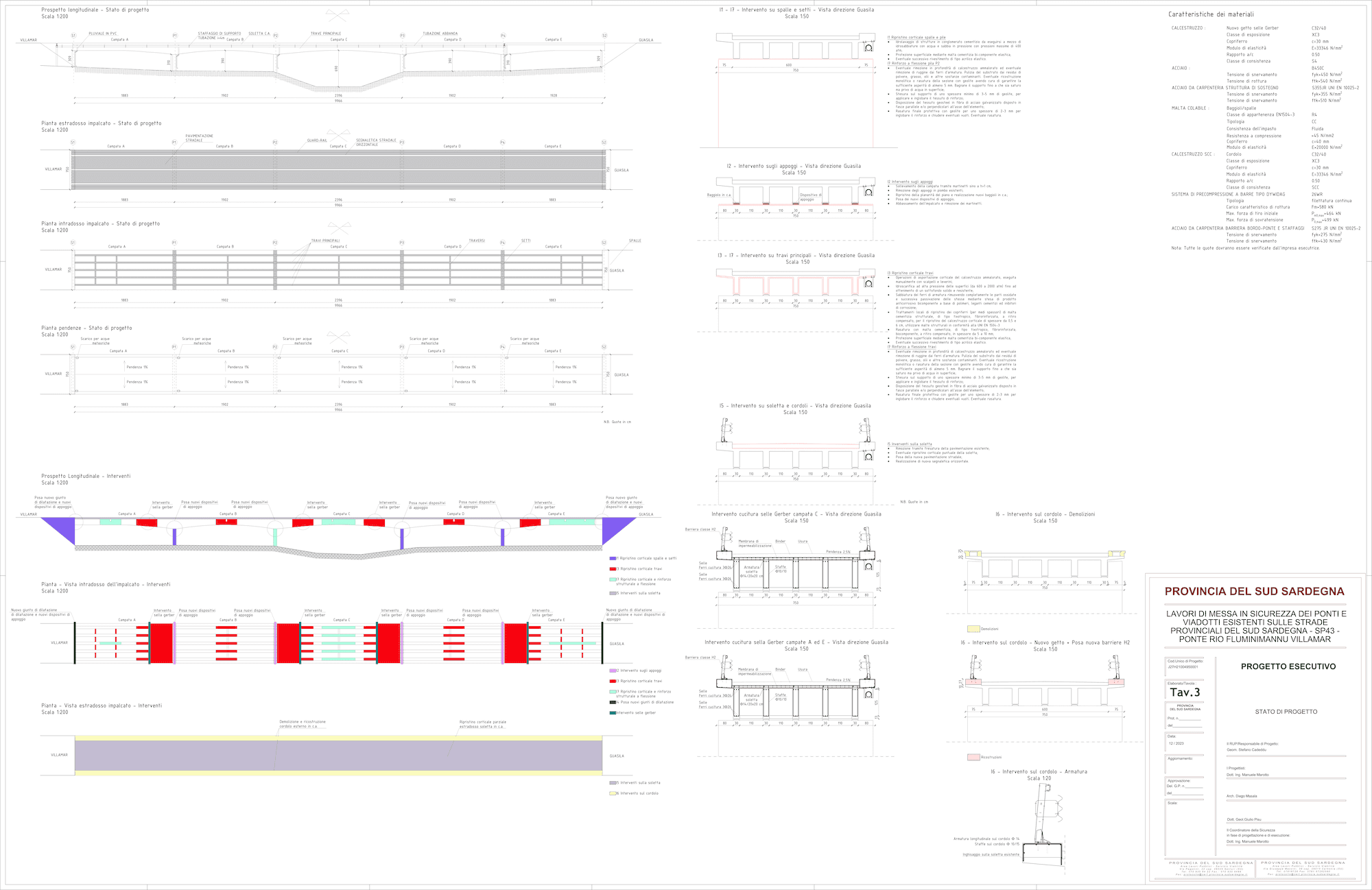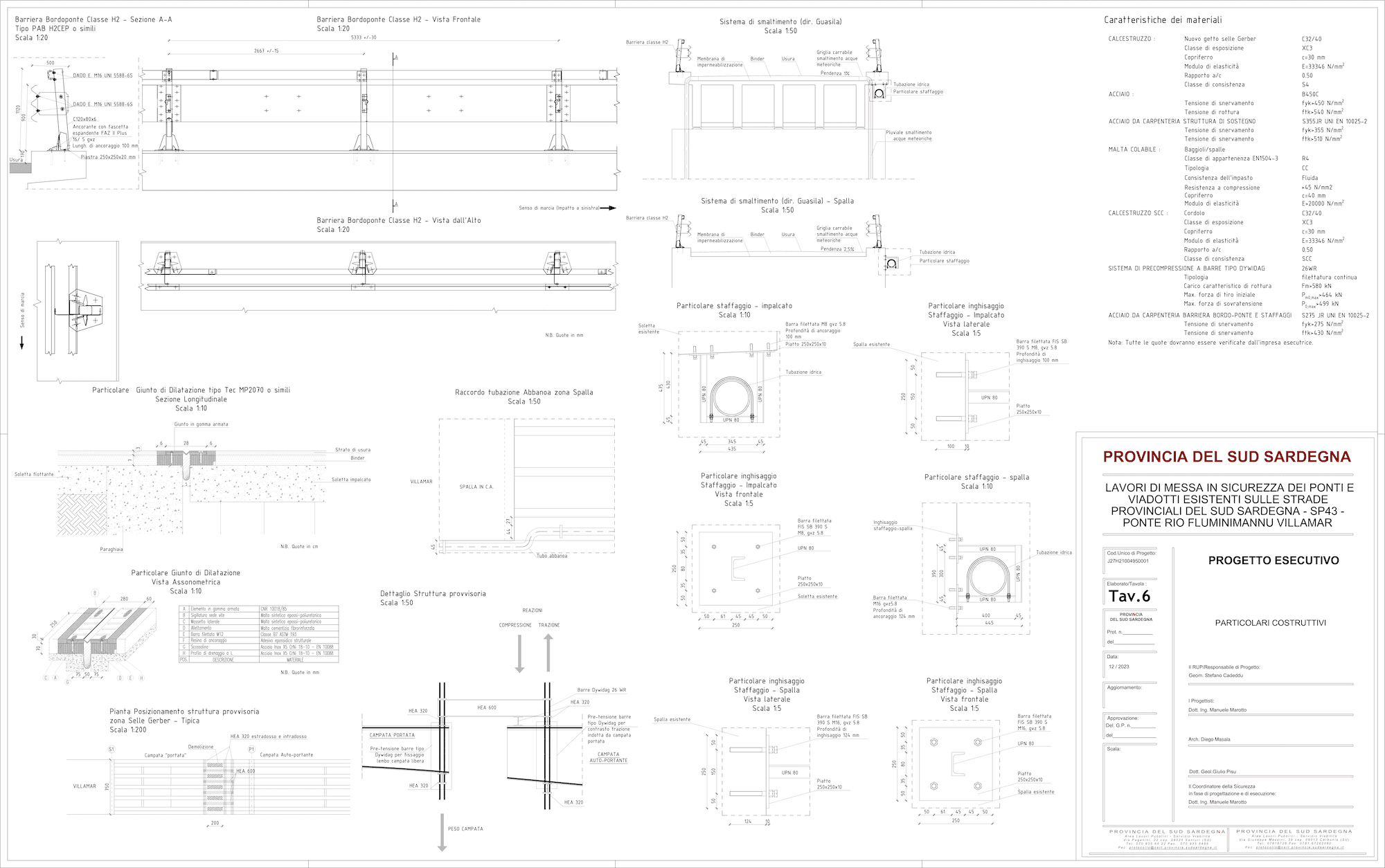Secured Solutions was commissioned to draw up a project to renovate the bridge over the Rio Fluminimannu near the centre of Villamar. A thorough investigation campaign was then carried out, and a plan of action was developed to restore the work’s functionality and align it with current regulations.

Designed in 1959 by engineer Giuseppe Manca, the bridge was tested in October 1964, three years after the completion of the work directed by engineer Igino Di Bella on behalf of the company Ferrobeton of Cagliari and commissioned by the Marmilla Land Reclamation Consortium.
Archive research and on-site surveys revealed that it is a reinforced concrete structure covering 98 m divided into five spans. These were built with ribbed beams that continue without interruption above the intermediate supports, consisting of 5 ‘cast steel’ supports, distributed with a constant pitch on the top of the piers. And since the points of discontinuity have been resolved with Gerber saddles arranged along the development of the span, the bridge is configured as a sequence of brackets interlocked with the piers, which, with a profile formed by enormously lowered arches, trace the diagram of moments. Despite the apparent modesty of its construction, the configuration of the bridge thus appears to be the result of a search for coherence between structure and stresses, enriched by some particular solutions, such as the cuts that pierce the intradossal slab of the central span, exposing the ribs and transversal stiffening elements.
From the reconstruction of the bridge’s material history and the investigations carried out, it emerged that the structural degradation was caused above all by the inherent criticality of the Gerber joint system, which favours errors in the execution phase, such as misalignment between the brackets, and defects in the operating phase, since the joint offers the side to infiltration, favouring the phenomena of carbonation of the concrete and oxidation of the steel.

An extensive campaign of investigations was therefore carried out to determine the real structural geometry of the structure, the state of consistency of the concrete, the number, position and residual size of the reinforcements, and the type of joints and support apparatus. The results of the tests carried out with full respect to the original configuration allowed the drafting of the intervention plan, which recognises a central role in eliminating the Gerber saddles. A section of the deck straddling the joints was then demolished and solidified with new ‘Dywidag’ type reinforcement bars and a completion casting. To execute this intervention, a provisional metal structure was specially designed to avoid altering the alignment of the bridge during the working phases. The modification of the structural scheme also required the reinforcement of some deck sections with the introduction of new reinforcement bars and fibre-reinforced composite materials. The intervention also entailed replacing the steel supports with the installation of new bearings, the demolition of the kerb; the restoration of the deteriorated sections with the removal of the iron covers, the sandblasting and treatment of the existing reinforcements with rustproof paints, the cortical restoration of the areas showing signs of deterioration, the preparation of the new expansion joints, the reconstruction of the kerbs, and finally the installation of the road paving and new barriers.


































